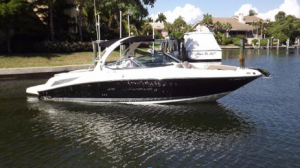Three simple guidelines to boost your image optimization
As impressed as I am with Google and all they do, did you know search engines are blind? They are incapable of viewing images on websites. It’s in fact the website’s responsibility to name and describe exactly what an image is for the search engines to read. Without proper image optimization, search engines are left to believe your website is full of blank spaces.
But don’t worry, image optimization is a simple tactic which can help increase your website’s search engine ranking. Read on and implement these simple guidelines to improve your image optimization:
1. Write descriptive image file names
Search engines locate relevant images to correlate with user searches based on image file names. Image file names appear in the URL and properly naming them boosts your search engine optimization (SEO).
When uploading an image online, never leave an image with its default name (i.e. IMG1234). Instead, include exactly what the image is while keeping your dealership’s keyword strategy in mind. Always try to use your dealer specific keywords within an image file name. An example image file name for the image above would be: 2013-Sea-Ray-300-SLX.
Notice the use of the hyphens in the example and not underscores. Search engines prefer the use of hyphens in file names because they are easier to analyze.
2. Use alternative texts
Now that you have an image file name, you must insert alternative texts, commonly referred to as “alt texts” or “alt tags” to describe what the image is before placing it on your website.
Google sends out Googlebots to discover what’s on every web page of your website. Alt texts provide content for search engine spiders to read and credit your website.
An example for the image above would be: alt=“[2013 Sea Ray 300 SLX on display in water]”.
As all website providers are different, check with your provider’s support team on how to create image file names and alternative texts.
3. Properly size your images
The size of an image can greatly impact your website’s SEO. The larger the image, the longer it takes to load. Users tend to navigate away from websites after the recommended three second load time has passed. To avoid long load times save your images for the web and in .JPEG or .PNG format and set your camera for web-friendly image sizes. You don’t need a 12mb image to display on your website.
Always keep in mind that the time it takes your website to load is a part of Google’s algorithm – and images play a large role in loading times.





